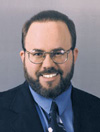The San Francisco Mint Coins of 1931, Part Two
Posted on 3/1/2006
 The 1931-S nickel is an enormously popular coin with collectors, due to both its very low mintage for a 20th century issue and its relatively high availability in Mint State condition. This fortunate convergence has allowed collectors of moderate means to own a nice, lustrous example of a coin that, in theory, should be almost unobtainable. Obviously, there's more to the story than meets the eye.
The 1931-S nickel is an enormously popular coin with collectors, due to both its very low mintage for a 20th century issue and its relatively high availability in Mint State condition. This fortunate convergence has allowed collectors of moderate means to own a nice, lustrous example of a coin that, in theory, should be almost unobtainable. Obviously, there's more to the story than meets the eye.
San Francisco was the only mint to coin nickels in 1931. The nation's shattered economy during that depression year was so slow that large numbers of new coins were simply not needed. A total of 1,200,000 1931-S nickels was minted, the second lowest figure for the very popular Indian Head/Buffalo series. This total might have been much lower had not a Mint official in Washington intervened. On November 19, 1931 Acting Mint Director Mary M. O'Reilly wrote to San Francisco Mint Superintendent M. J. Kelly drawing his attention to an alarming statistic:
The only nickels coined this year were those manufactured at your mint; $9,700 worth being issued in January. This amount, if allowed to be the total coinage for the year, would send the nickels of 1931 to a premium and would cause the Treasurer and this Bureau a good deal of trouble for years. This Bureau has conferred with the Treasurer’s Office and it is suggested that you discontinue the coinage of dimes and prepare to run on nickels for the balance of the calendar year.
It is understood that you have about $14,700 worth of nickels for recoinage and that you have in addition a sufficient amount of nickel on hand to permit you to continue coining this denomination until the close of the calendar year. This Bureau will be glad to have you manufacture as many of these coins as you can without overtime. After the beginning of the calendar year 1932, it is suggested that you resume the coinage of dimes and one-cent pieces.
There you have it. Had not the Mint Bureau directed that additional nickels be coined, the total mintage for this issue would have been just 194,000 pieces! Imagine how desirable this date would be with such a small number minted.
The second suggestion of Acting Director O'Reilly was not carried out, as the San Francisco Mint coined neither cents nor dimes during 1932. Just 408,000 circulating commemorative quarters honoring the bicentennial of George Washington's birth were minted there that year. The only other coinage to occur in San Francisco before 1935 was a run of half dollars in 1933-34 and a relatively small coinage of dollars in 1934. Additional nickels were simply not needed in commerce, and it wasn't until 1935 that the 1931-S nickels began to be issued in quantity, along with an additional backlog of unreleased 1930-S Buffaloes.
By that time, the low mintages of both issues were known to the hobby, and speculators scooped up large quantities by the roll. While this hoarding represented only a small portion of the 1930-S nickel mintage of more than five-and-a-half million pieces, it appears that a sizeable percentage of the 1931-S issue may have been saved in Mint State condition, based on current availability. Rolls of this semi-key date were commonplace in the coin market for decades, and a few may still be intact in old estates. This has kept the price of nice examples within reach of most collectors, while the narrow price spread between heavily worn 1931-S nickels and Mint State pieces reflects this unnatural survivorship.
The 1,800,000 dimes coined at San Francisco in 1931 were likewise the last emission from that mint for several years. Less popular with collectors of the time than cents and nickels, fewer of the dimes were hoarded. This is evident both in the frequent appearance of heavily worn pieces and in the broader price spread between the grades of Good and Mint State. The 1931 dimes from all three mints had fairly small mintages and were subject to some hoarding when released around 1934-35, and this has served to make them affordable. Had such small mintages occurred during more prosperous times, when the coins were needed in circulation immediately, they would be quite scarce in Mint State condition. This is why Mint State 1926-S dimes are so rare and expensive, while 1931-S dimes of nearly similar mintage may be obtained at a reasonable price. Though readily available in unworn condition, the nickels and dimes dated 1931-S are not always attractive coins. The nickels in particular were poorly made. While typically quite lustrous, they often reveal poor detail definition and worn dies. It will take some searching to find one that is both lustrous and sharply struck. The dimes, being made of a softer alloy, are more likely to have good overall definition. For the series specialist, however, the goal is to have one that possesses fully separated bands on the fasces. Such coins, designated "FB" by the grading services, comprise just a small portion of the Mint State 1931-S dimes.
David W. Lange's column, USA Coin Album, appears monthly in Numismatist, the official publication of the American Numismatic Association.
Stay Informed
Want news like this delivered to your inbox once a month? Subscribe to the free NGC eNewsletter today!
